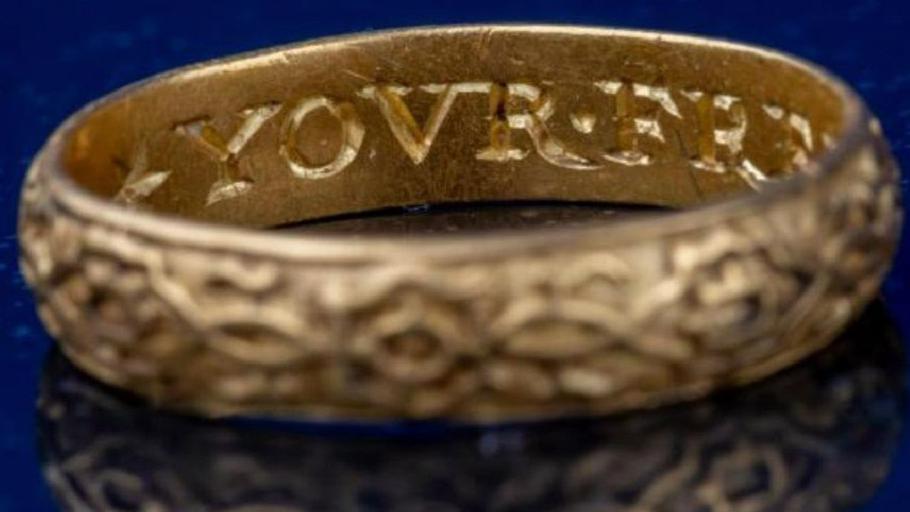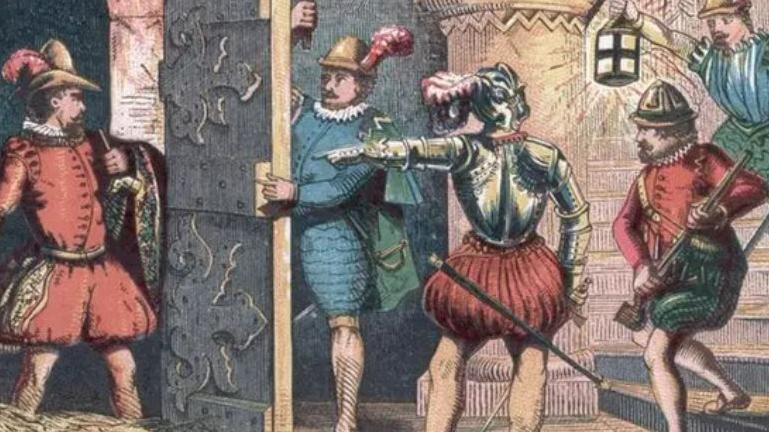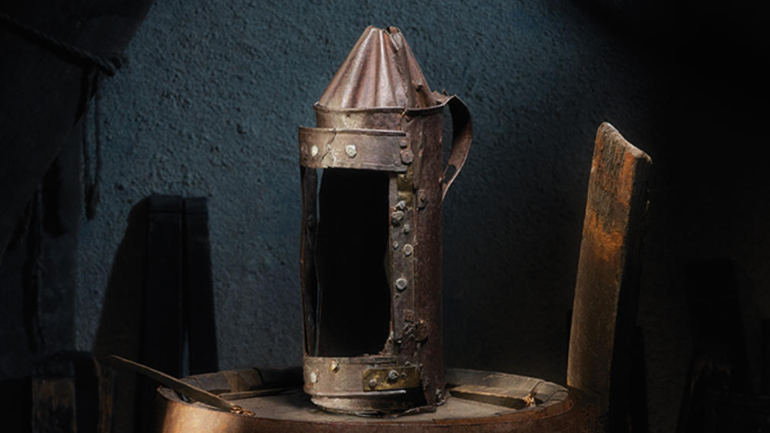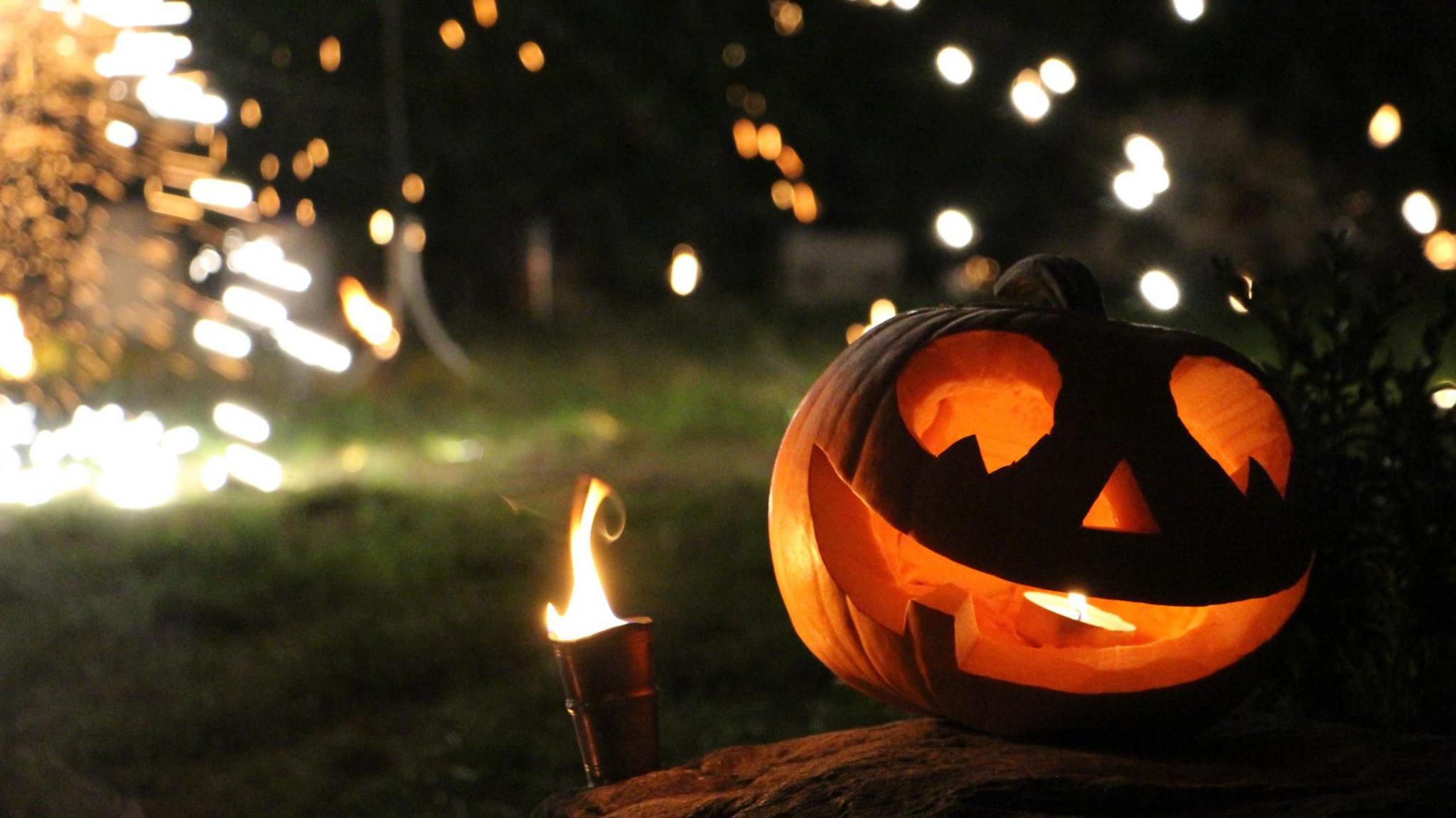Gunpowder Plot 'leader's ring' to be auctioned

The 16th Century gold ring could go fetch between £8,000 and £12,000, the auctioneers say
- Published
A 16th Century gold ring thought to have belonged to the man who led the Gunpowder Plot is expected to sell for up to £12,000 at auction.
The ring was discovered last year, by metal detectorist Andrew Rose, from Birmingham, in a field next to Warwickshire's Bushwood Hall, in Lapworth, where plot leader Robert Catesby was born, in 1572.
It has an inscription that says "Yovr Frende in Deede" ("Your Friend in Deed"), which could allude to the famous plot to blow up Parliament, on 5 November 1605.
Mr Rose said it was "hugely exciting" to find the ring ahead of it being auctioned by Hansons Auctioneers, next month.
"The hall where Catesby was born can only be accessed down a track, which means it is even more likely the ring, which was found only yards from the moat, was connected to the hall or was owned by someone who lived there," he said.
"The words 'in deede' suggest whoever gave the ring was prepared to prove his loyalty in actions rather than just words. It was a great find and hugely exciting."
Bushwood Hall was said to have been used as a base for the conspirators, with Mr Catesby stockpiling weapons and supplies there.
It was also home to another of the plotters, John Wright, who went to school in York with Guy Fawkes, who has since become the most famous of the group.
According to the British Museum, there is no record of any ring with the particular inscription the ring has.
'Audacious attack'
At the time gold bands, also known as posy rings, were given as tokens of affection, allegiance or friendship among male companions and allies.
Meanwhile, the plotters had planned to put the Midlands at the heart of their rebellion if their plan to assassinate King James I had succeeded.
But they were caught after an anonymous warning letter was sent to one of the lords, warning him to stay away from parliament.
Guy Fawkes was then discovered as he hid in a cellar under the building, on the night before the planned attack.

Guy Fawkes, the most famous of the Houses of Parliament explosion plotters, was discovered the night before, at the scene of where the crime was to be committed
He was later executed by hanging, drawing and quartering.
Mr Catesby, along with the Wright brothers, was killed by the king's men at Holbeach House in South Staffordshire, on 8 November 1605.
Auctioneer Charles Hanson said he believed the ring belonged to one of the plotters, adding "just imagine it glinting by firelight as they planned one of the most audacious attacks in British history".
"Given the remoteness of the hall's location, its link to Catesby, and the date and inscription of the ring, it is tantalising to imagine it belonging to one of the plotters," he said.
Get in touch
Tell us which stories we should cover in Warwickshire
Follow BBC Coventry & Warwickshire on BBC Sounds, Facebook, external, X, external and Instagram, external.
Related topics
More stories like this
- Published5 November 2024

- Published31 October
